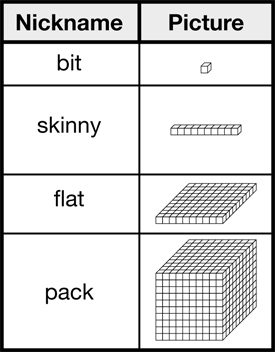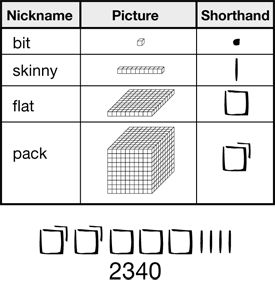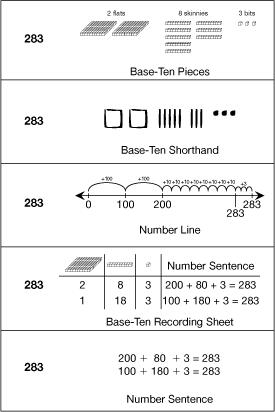Students use base-ten pieces to represent three-digit numbers. They play a game to reinforce the concept that 10 base-ten pieces have the same value as the next larger piece. They explore different ways to partition numbers into ones, tens, and hundreds and look for the partition that uses the fewest pieces.
Content in this Lesson
- Representing numbers (to the hundreds) using base-ten pieces, base-ten shorthand, and symbols [E1].
- Partitioning (decomposing) numbers into ones, tens, and hundreds in more than one way [E2].
- Showing different partitions of numbers using base-ten pieces and number sentences [E3].
- Recognizing that different partitions of a number have the same total (e.g., 100 + 20 + 3 = 100 + 10 + 13) [E4].
- Finding the partition that uses the fewest base-ten pieces.
- Connecting base-ten partitions of a number to place value.
Daily Practice and Problems C–F
C. Subtraction Flash Cards: Groups 5 and 6
Assessment in this Lesson
| Assessment | Expectation Assessed |
|---|---|
|
Hundreds, Tens, and Ones |
|
|
DPP Item C |
|



























